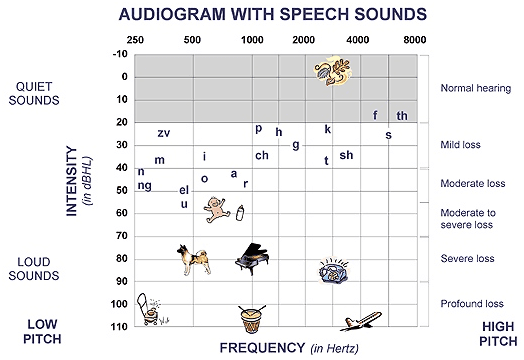When you arrive for your exam, you will be greeted by the front office staff and asked for basic health and insurance information. You will also receive a copy of the HIPAA Privacy as mandated by law.
As your exam begins, your audiologist will review your personal hearing history with you and will ask you some questions to discover the specific types of environments in which you may be experiencing some difficulty in hearing. A medical history will also be reviewed for any personal health or medication issues that may be contributing to any hearing problems.
Next, the audiologist will look examine your ears by using an otoscope. This instrument is designed to see the ear canal and the ear drum to determine if there is ear wax or debris obstructing the canal. Sometimes the audiologist will have a video otoscope so you can see inside your ear as well.
The first test that is often conducted will be impedance/immittance testing. The purpose of this test is to determine the movement of the eardrums (tympanic membrane) to identify if its movement is normal or if pathology is suspect that can include perforations, middle ear fluid and Eustachian tube dysfunction.
The next test that is conducted is the pure tone hearing test. This is conducted in a quiet environment, sometimes in a soundproof booth. The audiologist will place headphones that are connected to an audiometer over your ears. The audiometer transmits a series of tones at a variety of volumes into your ears to determine the exact point or "threshold" at which you can hear various frequencies of sounds. When you hear a sound, you will be asked to say "yes" or raise your hand.
Next is speech testing, when you will listen to a series of one and two syllable words at different volumes and be asked to repeat them. This will determine the level at which you can not only detect, but understand speech. Another test that may be conducted is a speech in noise test. This test will determine how well you hear sentences in a noisy environment.

The results of your tests will be recorded on a form called an audiogram, which the hearing care professional will review with you. The audiogram reflects your hearing loss in frequencies and decibels. You will be shown the type, pattern and degree of hearing loss, as well as the percentage of normal conversational speech that you are still able to hear. Your audiologist will then meet with you to discuss any results and concerns about your hearing.
Get Started Right Now!
Get in Touch
Ask a question or schedule an appointment below.
This is a paragraph. Writing in paragraphs lets visitors find what they are looking for quickly and easily.
This is a paragraph. Writing in paragraphs lets visitors find what they are looking for quickly and easily.
This is a paragraph. Writing in paragraphs lets visitors find what they are looking for quickly and easily.
This is a paragraph. Writing in paragraphs lets visitors find what they are looking for quickly and easily.
This is a paragraph. Writing in paragraphs lets visitors find what they are looking for quickly and easily.
Jane Faber, New York
This is a paragraph. Writing in paragraphs lets visitors find what they are looking for quickly and easily.
This is a paragraph. Writing in paragraphs lets visitors find what they are looking for quickly and easily.
Jane Faber, New York
Jane Faber, New York
Footer contact form
Bieri Hearing Specialists | SAGINAW | FRANKENMUTH | MIDLAND MI AUDIOLOGIST | CLARE | BAY CITY | Phone: 1-800-329-1747
Bieri Hearing Specialists, All Rights Reserved
